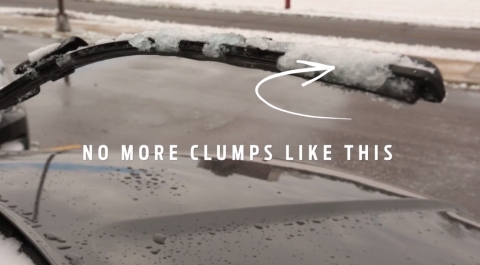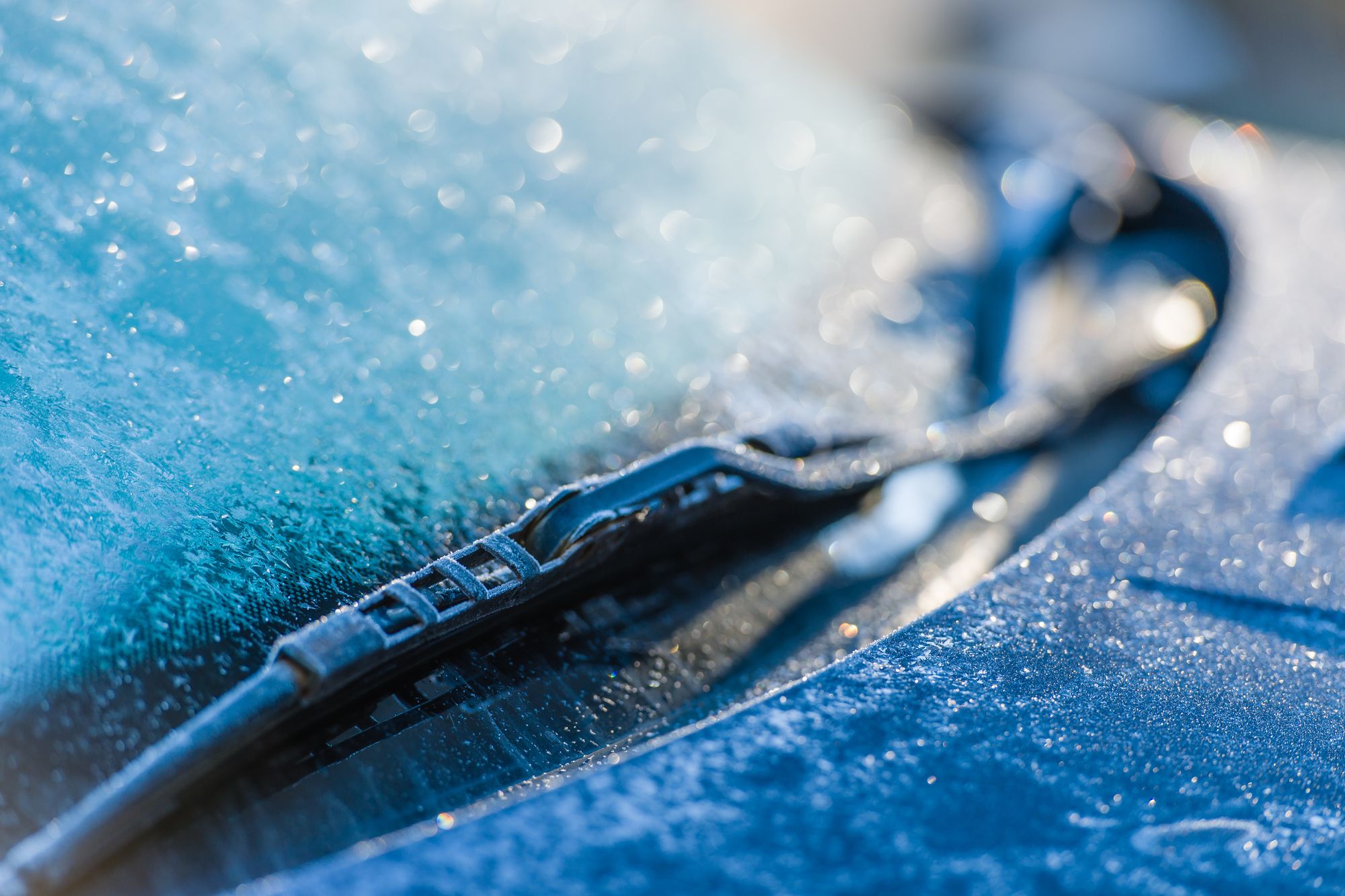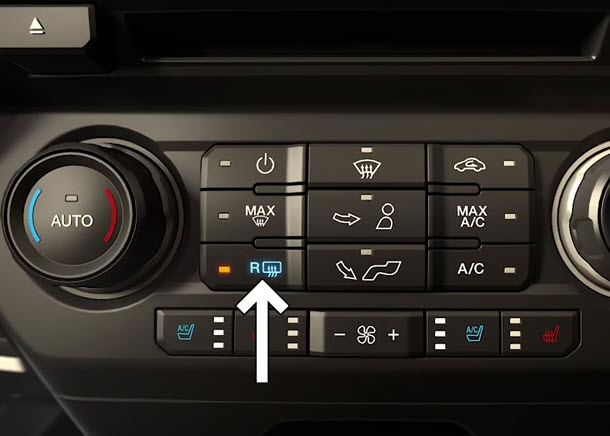How to Defrost Windshield Wipers
To defrost windshield wipers, lift the wipers up and chip away any ice. Then, use a windshield de-icer spray to melt the remaining ice.
Defrosting windshield wipers is essential for safe driving during winter. Cold temperatures can cause the wipers to freeze and become ineffective, leading to reduced visibility and potential safety hazards on the road. By knowing how to properly defrost windshield wipers, you can ensure clear visibility and safe driving in icy conditions.
In this guide, we will explore the various methods and techniques for defrosting windshield wipers effectively, keeping you and your passengers safe during winter weather. Whether you’re facing light frost or heavy ice accumulation, these defrosting tips will help you maintain optimum visibility and control while driving.
Importance Of Defrosting Windshield Wipers
Defrosting windshield wipers is a crucial step that often gets overlooked during winter weather conditions. However, failing to defrost your wipers can have serious consequences on your safety on the road and your wipers’ functionality. It is essential to understand the importance of defrosting windshield wipers to ensure optimal performance and prevent potential damage.
Ensuring Safety On The Road
Defrosting windshield wipers plays a vital role in ensuring your safety while driving in cold weather. As temperatures drop, ice and snow can accumulate on your windshield, obstructing your vision. Clear visibility is imperative to navigate safely through traffic, especially during adverse weather conditions. Defrosting your wipers helps eliminate any ice or snow build-up on the wiper blades, enabling them to make proper contact with the windshield and effectively clear away any precipitation. This clear line of sight allows you to anticipate potential hazards on the road and react promptly, reducing the risk of accidents.
Preventing Damage To Wipers
Properly defrosting windshield wipers also helps prevent damage to the wiper blades themselves. When wipers are frozen to the windshield, attempting to use them can cause unnecessary strain on the wiper motor and transmission, potentially leading to costly repairs. Additionally, the rubber blades can become damaged or torn if they are forced to remove ice or snow without being properly defrosted. By taking the time to defrost your wipers before turning them on, you can avoid these potential damages and extend the lifespan of your wipers.
Now that you understand the importance of defrosting windshield wipers, it is essential to incorporate this step into your routine during the winter months. Investing a few extra minutes to ensure that your wipers are defrosted will not only enhance your safety on the road but also prolong the life of your wiper blades. So, before hitting the road, make sure your wipers are clear of ice and snow. Drive safely!

Credit: autoglassmn.com
Methods For Defrosting Windshield Wipers
The methods for defrosting windshield wipers are crucial to ensure clear visibility during winter driving. When snow and ice build up on the wiper blades, it can impede their ability to effectively clear the windshield, posing a safety hazard. There are several methods you can use to defrost windshield wipers, allowing them to function optimally in cold weather conditions.
Using De-icing Fluid
De-icing fluid is an efficient solution for quickly defrosting windshield wipers. Simply spray the de-icing fluid onto the wiper blades and allow it to penetrate the ice and snow. Using a soft cloth, gently wipe the wiper blades to remove any remaining debris. This method effectively thaws wipers without causing damage, ensuring they operate smoothly and effectively.
Using Rubbing Alcohol Solution
A rubbing alcohol solution is another effective way to defrost windshield wipers. Mix equal parts of rubbing alcohol and water in a spray bottle. Then, liberally spray the solution onto the wiper blades to dissolve the ice and snow. Gently lift the wiper blades and wipe them with a clean cloth to remove any remaining residue, ensuring clear and unobstructed visibility.
Using Warm Water And Vinegar Mixture
A combination of warm water and vinegar can be used to defrost windshield wipers. Mix equal parts of warm water and vinegar in a container. Using a sponge or cloth, apply the mixture to the wiper blades to melt away the ice and snow. Afterward, wipe the blades clean to ensure they are free from any remaining frost, allowing for effective performance.
Tips For Effective Defrosting
Start The Defrosting Process Early
In the winter months, starting the defrosting process early is critical to ensure your windshield wipers are working efficiently. Turning on the defroster of your car at least five minutes before driving will help to gradually melt the ice and snow on the windshield and wiper blades, preventing them from sticking and reducing the risk of damage.
Avoid Using Hot Water
Avoid the temptation to use hot water to defrost your windshield wipers. While it may seem like a quick fix, pouring hot water on a cold windshield can cause the glass to crack due to the drastic temperature change. Additionally, hot water can damage the wiper blades, reducing their effectiveness and lifespan.
Consider Using Windshield Covers
Windshield covers are an effective way to prevent frost and snow from accumulating on your windshield and wiper blades. By using a windshield cover, you can minimize the amount of ice and snow that needs to be removed, saving you time and effort in the morning. It’s a simple and convenient solution for keeping your windshield wipers defrosted and ready for use.

Credit: wrench.com
Preventive Measures To Avoid Freezing
When winter arrives, having a clear windshield is essential for safe driving. However, windshield wipers can often freeze overnight, making it difficult to clear away ice and snow. To prevent this inconvenience, there are some simple and effective steps you can take. By implementing these preventive measures, you can ensure that your windshield wipers remain in optimal condition throughout the cold winter months.
Lifting Wipers When Not In Use
One effective measure to prevent your windshield wipers from freezing is to lift them up when they are not in use. By lifting the wiper blades away from the windshield, you can prevent them from coming into contact with ice and snow accumulation. This helps to minimize the risk of the blades freezing and sticking to the glass surface. Whether you are parked overnight or when you know the temperature will drop significantly, taking a few seconds to lift the wipers can save you time and effort.
Applying Silicone-based Lubricant
Another preventive measure to avoid freezing windshield wipers is to apply a silicone-based lubricant. This type of lubricant creates a protective barrier on the wiper blades, reducing the adhesion of ice and snow. It also helps to prevent the rubber of the blades from becoming brittle in extreme cold temperatures. Prior to winter, purchase a silicone-based lubricant specifically designed for windshield wipers. Apply a small amount of the lubricant along the length of the blades, spreading it evenly with a clean cloth. This simple step can go a long way in preventing freezing and improving the overall performance of your wipers.
Parking In A Garage Or Covered Area
Parking your vehicle in a garage or covered area is an effective preventive measure to avoid windshield wiper freezing. By providing a sheltered environment, you can protect your wipers from exposure to freezing temperatures and other harsh weather conditions. If a garage is not available, consider using a carport or erecting a temporary cover over your vehicle to shield it from the elements. This will not only prevent your wipers from freezing but also extend their lifespan, ensuring clear visibility during winter weather. Remember, the less exposure your windshield wipers have to extreme cold, the less likely they are to freeze.
By following these preventive measures—lifting wipers when not in use, applying a silicone-based lubricant, and parking in a garage or covered area—you can effectively avoid windshield wiper freezing during the winter season. Taking these simple steps will save you time, effort, and potential damage to your wiper blades. Ensure a clear windshield and safer driving experience throughout the cold winter months by implementing these effective preventive measures.
Professional Assistance And Wiper Replacement
When To Seek Professional Help
Properly maintained wiper blades ensure clear visibility, reducing the risk of accidents.
- Unusual noises or streaks on the windshield indicate the need for professional inspection.
- Consult a technician if wipers do not move smoothly or leave behind residue.
Signs It’s Time To Replace Wiper Blades
Regularly check wiper blades for wear and tear to maintain optimal performance.
- Visible cracks, splits, or detachment from the arm indicate the need for replacement.
- Reduced visibility during rain or snow means it’s time to install new wiper blades.

Credit: www.gwinnettplaceford.com
Frequently Asked Questions On How To Defrost Windshield Wipers
What To Do If Windshield Wipers Are Frozen?
To unfreeze windshield wipers, gently lift them off the windshield and thaw with lukewarm water or de-icer spray.
How Do You Get Windshield Wipers Unfrozen Fast?
To unfreeze windshield wipers fast, soak a cloth in warm water and gently wipe the frozen blades. If that doesn’t work, pour a mixture of vinegar and water onto the wipers. Another option is to heat the wipers with a hairdryer or defrost function in your car.
How Do You Unfreeze Windshield Wiper Fluid?
To unfreeze windshield wiper fluid, use a winter-grade fluid or add a concentrated de-icer. You can also warm up your car or use a hair dryer to melt the frozen fluid. Avoid pouring hot water on the windshield as it may cause cracking.
How Do You Melt Frozen Wipers?
To melt frozen wipers, pour lukewarm water over them. Gently lift the wipers and wipe away any excess water. Avoid pouring hot water, as it can damage the wipers. Alternatively, use a de-icing spray or rubbing alcohol for quick melting.
How Does Cold Weather Affect Wipers?
Extreme cold can make wipers stiff, affecting flexibility and functionality.
Can I Pour Hot Water On Wipers?
Avoid pouring hot water; it can crack windshield and damage wipers.
What’s The Best Way To Defrost Wipers?
Use a soft cloth with alcohol solution to gently defrost wipers.
Conclusion
Defrosting windshield wipers is a crucial step in ensuring road safety during the winter months. By following the simple techniques outlined in this blog post, you can effectively remove ice and snow, improving visibility and preventing damage to your wiper blades.
Remember to regularly maintain your windshield wipers throughout the season to ensure their optimal performance. Stay safe on the roads and drive with confidence.


